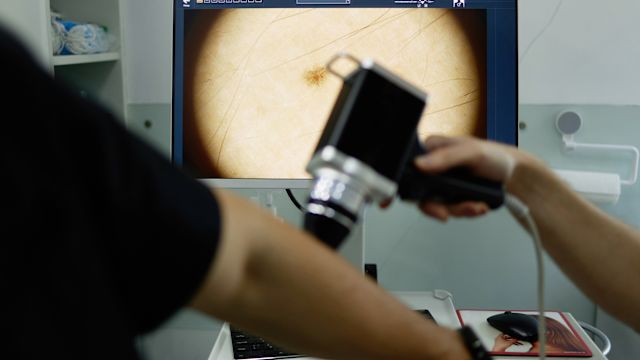Updated on February 19, 2025
Melanomas are a type of skin cancer that begins in pigment-producing cells called melanocytes. Melanocytes produce a pigment called melanin, which gives skin its color. While less common than other types of skin cancer, melanoma is often more aggressive than other types of skin cancer—it is more likely to spread to other parts of the body and it accounts for the majority of skin cancer deaths.
Treatment for melanoma will depend on the stage, the location, the risk of recurrence, the cancer’s gene mutations, and the age and overall health of the person being treated. Treatment often includes a combination of surgery and a combination of anti-cancer drugs. Many treatment plans include an immunotherapy drug.
Below is an overview of subcutaneous immunotherapies, immunotherapies that are administered with an injection under the skin.
What is immunotherapy?
In the simplest terms, immunotherapies are cancer treatments that help the body’s immune system fight cancer. There are multiple types of immunotherapies that are used in the treatment of melanoma, including therapeutic vaccines, topical creams that stimulate an immune response, and lab-altered viruses that infect and kill cancer cells. Not every type of immunotherapy is appropriate for every case of melanoma.
Immune checkpoint inhibitors, drugs that block or disable proteins that cancer cells use to evade the immune system, are a common treatment option. Several immune checkpoint inhibitors can be administered with subcutaneous injections.
What is a subcutaneous injection?
The subcutaneous layer is a layer of fatty tissue found just below the skin. Medicines that are injected into the subcutaneous layer will be absorbed by the lymphatic system, the body’s network of lymph vessels and lymph nodes that delivers immune cells throughout the body. The subcutaneous layer also provides good “bioavailability,” meaning medicines injected into this layer reach their intended destinations (in the case of a subcutaneous immunotherapy, cancer cells).
Subcutaneous injections are given into the abdomen or thigh, though the location of the injection depends on the drug being used (and some drugs will need to be injected into specific areas of the body).
Why might your healthcare team recommend subcutaneous immunotherapy?
Subcutaneous immunotherapy is often discussed in comparison to intravenous (IV) immunotherapy, infusions of immunotherapies that are administered into a vein. It’s important to remember that no treatment option or method of administration is right for everyone, and that cancer treatment is a different experience for everyone. But subcutaneous immunotherapies may have several benefits:
- It's a quicker appointment. Infusions of checkpoint inhibitors typically last at least 30 minutes, and can take up to 90 minutes, depending on the drug being used. Subcutaneous injections take 3 to 7 minutes.
- It can be done at a provider’s office. Infusions typically require a visit to an infusion center or hospital, which can require more travel time for a person who does not live near one of these locations. A subcutaneous injection can be done at a healthcare provider’s office.
- Lower risk of side effects. While every cancer treatment can cause side effects, some studies have found subcutaneous immunotherapies may have a lower incidence of certain side effects compared to IV infusions.
These factors may help make treatment for melanoma easier and more accessible.
If your healthcare provider is recommending a subcutaneous immunotherapy, ask questions, including why they recommend this approach. If you or a loved one is living with melanoma, talk to your healthcare providers about what treatment options are available and discuss your preferences for treatment.




